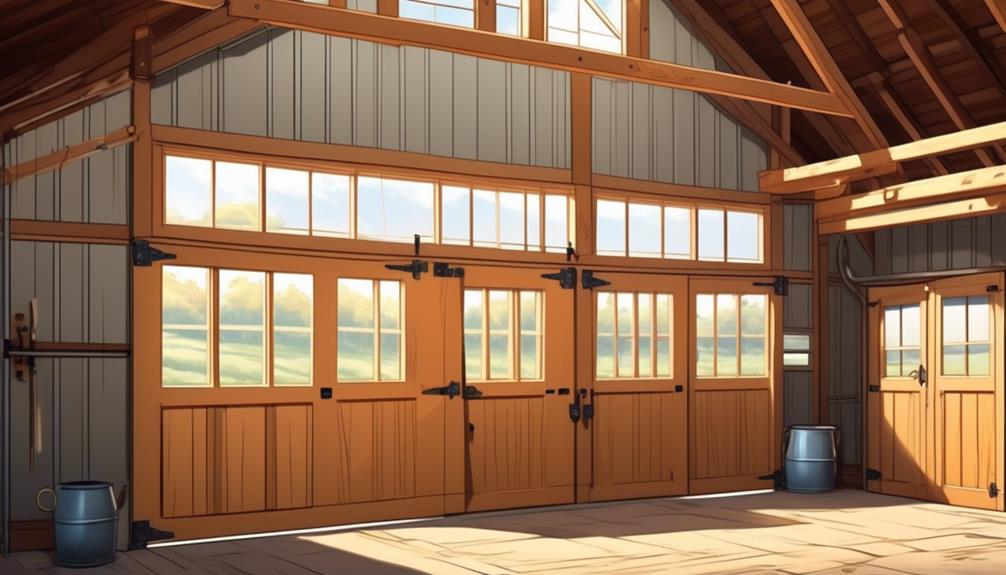When it comes to enclosing a pole barn, the key is to select the right materials for a sturdy and weather-resistant structure. By carefully considering the unique characteristics of your pole barn, you can transform it into a functional and secure space that protects your belongings and enhances your property's overall appeal.
With the right approach, you can create a private haven that meets your needs.
Assessing the Structure

Check the foundation for any cracks or shifting. Look for leaning or bowing in the walls.
Inspect the roof for sagging or missing shingles. Ensure the support beams and trusses are secure and not showing signs of rot or decay.
Evaluate the doors and windows to make sure they open and close properly. Also, check the electrical and plumbing systems if present to ensure they're functioning correctly and up to code.
Address any concerning issues promptly to prevent further damage or safety hazards.
Regularly inspect and maintain your pole barn's structure for longevity and safety.
Selecting the Right Materials
To ensure your pole barn lasts long and stays strong, it's important to choose the right materials for your project. Here are five key factors to consider when selecting materials for your pole barn enclosure:
- Insulation: Use high-quality insulation materials to control temperature and save energy.
- Siding: Pick durable, low-maintenance siding materials that resist rot, pests, and fire, such as vinyl, fiber cement, or metal.
- Roofing: Choose roofing materials that can withstand harsh weather and prevent leaks. Metal roofing is a popular and durable option.
- Windows and Doors: Invest in energy-efficient windows and doors with good insulation and quality locking systems.
- Caulking and Sealants: Use high-quality caulking and sealants to create a tight seal and prevent water damage.
Installing Doors and Windows

Steps | Description |
| ——- | ————- |
|---|---|
| 1 | Measure the opening for the door or window |
| 2 | Purchase the appropriate door or window |
| 3 | Install the door or window according to the instructions |
| 4 | Use a level to ensure it is straight and plumb |
| 5 | Seal any gaps or cracks with weatherstripping or caulk |
Ensuring Weatherproofing and Insulation
After installing the doors and windows, focus on sealing all gaps and cracks to prevent air leakage and moisture entry. Use caulk, expanding foam, or weatherstripping for this.
Additionally, install vapor barriers on the interior walls and ceilings to prevent condensation and moisture buildup.
Insulate the walls and roof using fiberglass batts, spray foam insulation, or rigid foam boards to improve energy efficiency and temperature control.
Don't forget to insulate the doors and windows using weatherstripping and insulation kits designed for them.
Consider insulating the concrete floor with foam board or spray foam to prevent heat loss through the ground.
